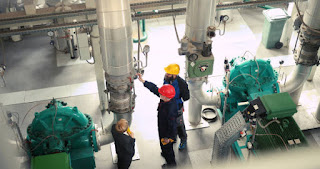A governor is a mechanical device that is used to control the speed of an engine or turbine. It works by monitoring the speed of the engine or turbine and adjusting the fuel or water supply as needed to maintain a steady speed. This is done by using a system of weights, levers, and valves to automatically adjust the fuel or water flow as the speed of the engine or turbine changes.
Governors are commonly used in a wide range of applications, including automobiles, power generators, and industrial machinery. In hydroelectric power plants, governors are used to control the speed of the turbine that generates electricity. The governor uses a system of weights and levers to control the flow of water into the turbine, which in turn regulates the speed of the turbine.
In automobiles, governors are used to control the speed of the engine. The governor uses a system of weights and levers to control the flow of fuel into the engine, which in turn regulates the speed of the engine. This is important for maintaining a steady speed, regardless of the load on the engine.
Governors are also used in industrial machinery, such as pumps and compressors, to control the speed of the machine and maintain a steady flow of fluid or gas. This helps to optimize the efficiency of the machine and prevent damage caused by excessive speed or overloading.
In short, governors are mechanical devices that are used to control the speed of engines, turbines and other machinery by adjusting fuel or water supply. They are widely used in different applications such as automobiles, power generators and industrial machinery, to maintain a steady speed and optimize the efficiency of the machine and prevent damage caused by excessive speed or overloading.



.jpeg)






.jpeg)
.jpeg)

0 Comments
Join the conversation! Leave your thoughts below and lets make an impact together.